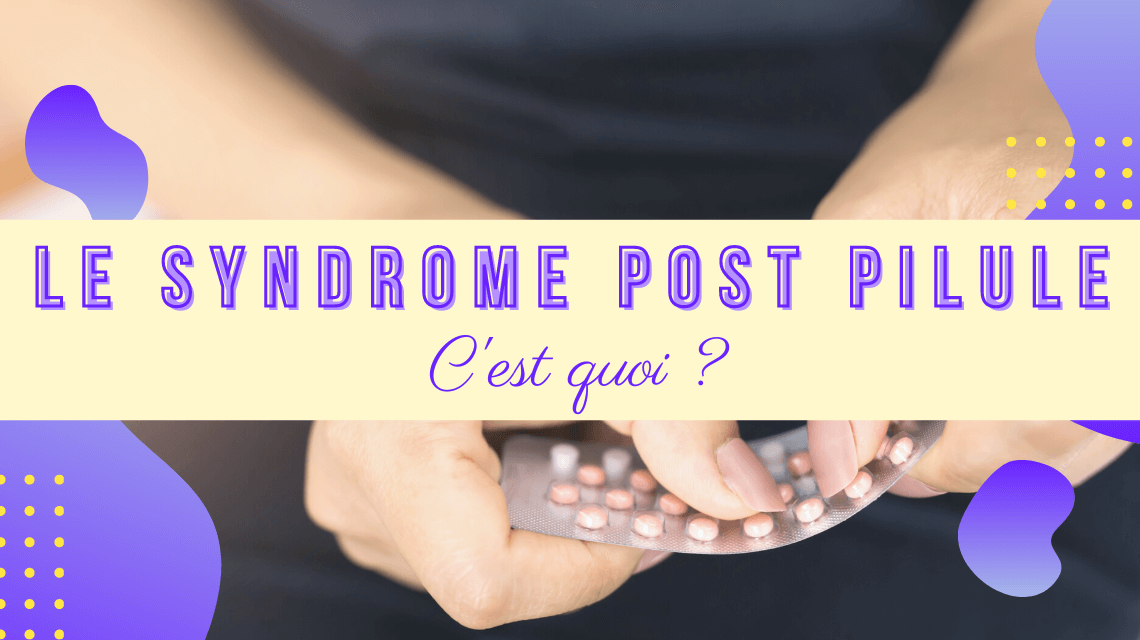Do you sometimes feel severe pain during your period ? Whether it's the first few days, or even a few days before? Unfortunately, you're far from alone. 50% to 80% of women suffer from dysmenorrhea (1). But we often don't understand why the pain is there. Today, we're going to take a look at what prostaglandins are and how they relate to menstrual pain.
Do you know what prostaglandins are?
Prostaglandins are chemical messengers present in our bodies. They are involved in the contraction of uterine muscles to evacuate the superficial part of the endometrium during menstruation, when fertilization has not occurred.
Until then, we're not talking about pain. But... Prostaglandins are a dime a dozen. If these messengers are present in excessive quantities, they can tend to accentuate muscle contractions. These increase abnormally, depriving uterine tissues of oxygen and compressing small vessels. This creates a form of inflammation and accentuates menstrual pain and cramps. And that's where period pains come in(https://www.quebecscience.qc.ca/sante/lorigine-des-douleurs-menstruelles/).
Are prostaglandins the only cause of menstrual pain?
Other molecules such as cytokines and leukotrienes may be involved in dysmenorrhea (menstrual pain). Like prostaglandins, they cause inflammation. On the other hand, if it sometimes starts before menstruation, it's called PMS(Pre-Menstrual Syndrome). You may experience abdominal cramps, changes in appetite, breast pain, irritability and more.
Inflammation and menstruation: what's the link?
Premenstrual syndrome (PMS) can affect up to 80% of women, with over 150 different symptoms, including pain. A study published in the Journal of Women's Health in 2016 suggests they all have a link to inflammation.
The experts examined data from over 3,000 American women of various ages and ethnic backgrounds and found that women with PMS had higher levels of C-reactive protein in their blood. This protein is produced by the liver in response to inflammation, but the exact causes of these symptoms remain a mystery.
Periods and disturbed or accelerated transit?
These prostaglandins can even have an effect on surrounding organs. In fact, they circulate in the bloodstream. And in blood, nothing is compartmentalized. This can also have an impact on digestion and transit.
Haven't you already noticed an accelerated transit (even diarrhea) from a few days/hours before your period until the first/second day of your period? It's very common and not abnormal. As you will have understood, this is linked to the contraction of muscles in these concomitant spheres (uterine sphere and digestive sphere).
Period pain: it's not normal!
Standardizing rule mechanisms is important. But normalizing pain during menstruation is a NO.
No, it's not normal to suffer during your period. All the more so if it is disabling and accompanied by other symptoms (migraines, nausea, vomiting, fainting...). In this case, we invite you to contact a doctor or gynecologist for the necessary tests. This can sometimes lead to the diagnosis of a pathology if there is one (such asendometriosis, for example), and is important for further follow-up.
What are the solutions for menstrual pain?
Menstruation can be accompanied by abdominal pain, headaches and fatigue. Fortunately, there are a number of drug and non-drug solutions available to alleviate these symptoms. Let's take a look at some possible solutions.
Medicated solutions
Following your appointment with your doctor, and without a prescription for the pill, he or she will probably suggest the use ofnon-steroidal anti-inflammatory drugs (such as ibuprofen or naproxen) (3). Their role is to block the production of prostaglandins, thereby reducing or even eliminating your pain.
Like all medications, anti-inflammatories are not harmless, so it's important to ask your doctor for advice. They are not recommended for people with liver, kidney or stomach problems.
If taken the day before your period, they are much more effective, as they block the production of prostaglandins. And to identify and anticipate this day, there's only one method: cycle monitoring.
However, as you'll understand, this is a temporary solution and is not recommended as a long-term solution. Moreover, it seems that only 20 to 25% of women are receptive.
Non-medicated solutions
A 2019 study (4) showed that 76% of women with endometriosis use self-management strategies to relieve their pain. Among them, heat, rest and meditation have proved to be the most commonly used means of relieving pain. Cannabis, hemp oil/CBD and dietary changes were the most effective in terms of pain reduction according to these women. Forms of exercise such as yoga or pilates have been considered less effective, but dietary choices and meditation can bring lasting relief.
Reducing menstrual pain with CBD: how does it work?
CBD, a powerful ally in soothing menstrual pain. How does it work? The cannabinoids in the hemp plant bind to our endocannabinoid system, creating an interaction that can help manage pain. In fact, CBD can relieve menstrual pain by acting as a catalyst on our nervous system to lessen the impact of the pain.
CBD is like a messenger that tells our body to ignore pain. And it gets even more interesting: research has revealed that cannabis receptors exist in the cells of the uterus. This means that the analgesic and anti-inflammatory benefits of CBD could potentially relieve menstrual pain.
Choose your high-quality CBD. Depending on your profile and pain, use5% or 10%CBD oil . As soon as you feel the pain coming on, place a few drops under your tongue and wait a few seconds before swallowing. The effects arrive 30 to 60 minutes later.
Ho Karan products are our allies at this time of year. Whether it's the CBD oil or the miracle balm, this brand's hemp products are of exceptional quality. You'll find everything on the market today, but trust us, this is the brand for you.

Relieving pain with heat: why does it work?
Dr Brian King, from UCL, conducted a study (5) which highlighted the theory that heat can relieve pain. This research has shown that if a heat source above 40°C is applied to the skin near the source of pain, it activates heat receptors which in turn block the chemical messengers of pain.
The team discovered that the heat receptor known as TRPV1 can block P2X3 pain receptors by blocking the pain felt by the body. However, Dr King added that heat can only provide temporary relief and that future research will focus on finding drugs that block P2X3 pain receptors.
Sources :
1- Schroeder B, Sanfilippo JS. Dysmenorrhea and pelvic pain in adolescents. Pediatr Clin North Am. 1999 Jun;46(3):555-71. doi: 10.1016/s0031-3955(05)70137-1. PMID: 10384807.
2- https://www.quebecscience.qc.ca/sante/lorigine-des-douleurs-menstruelles/
4 - Armour M, Sinclair J, Chalmers KJ, Smith CA. Self-management strategies amongst Australian women with endometriosis: a national online survey. BMC Complement Altern Med. 2019 Jan 15;19(1):17. doi: 10.1186/s12906-019-2431-x. PMID: 30646891; PMCID: PMC6332532. https://pubmed.ncbi.nlm.nih.gov/30646891/
5- https://www.sciencedaily.com/releases/2006/07/060705090603.htm





